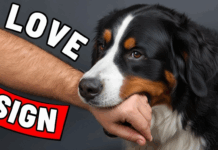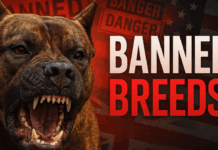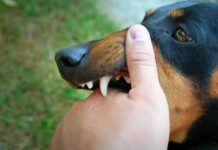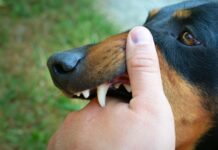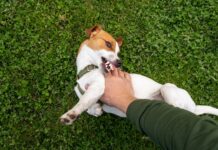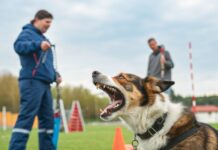Last Updated on October 6, 2024 by Dogs Vets
Strategies for Safer Dog Interactions in Austin’s Neighborhoods
Austin is known for its pet-friendly atmosphere, with numerous parks, trails, and communities welcoming dogs and their owners. However, this increased interaction between dogs and people has led to a rise in dog-related incidents. Dog attacks can be traumatic and result in serious injuries, both physical and psychological.
Understanding the factors contributing to these incidents and implementing effective prevention strategies is crucial for maintaining safety in Austin’s neighborhoods.
More reports of dog attacks surfacing make awareness and preventive measures more important than ever. An injury firm in Austin can provide valuable assistance to those affected by dog attacks, but ideally, steps should be taken to avoid these situations altogether. This article explores the key strategies for preventing dog attacks and ensuring the safety of both residents and their canine companions in Austin’s vibrant communities.
Understanding the Causes of Dog Attacks
Dog attacks often result from a combination of factors related to the dog’s behavior and the environment. One primary cause is a need for
proper training and socialization. Tools like GPS virtual fences can help, as shown in this SpotOn virtual fence review by Dogs Academy. These systems keep dogs secure, reducing the risk of aggressive incidents by preventing them from roaming into unsafe areas.
Dogs not adequately socialized may react aggressively when they feel threatened or encounter unfamiliar situations. Training helps dogs learn how to interact appropriately with people and other animals, reducing the likelihood of aggressive behavior.
Environmental factors also play a significant role. Dogs can become territorial and aggressive when they perceive a threat to their home or family. Situations such as loud noises, crowds, or the presence of other animals can trigger a defensive response. Understanding these triggers and ensuring dogs are exposed to various environments and experiences in a controlled manner can help mitigate the risk of attacks.
Socialize Dogs from a Young Age
Preventing dog attacks begins with responsible pet ownership. Dog owners should ensure their pets are well-trained and socialized from an early age. Training should include basic commands and positive reinforcement techniques to encourage good behavior. Regular exposure to different people, animals, and environments can help dogs become well-adjusted and less prone to aggression.
Additionally, maintaining control of your dog at all times is crucial. This includes using a leash in public spaces and ensuring your yard is secure to prevent escapes. Understanding and respecting your dog’s body language and knowing when to remove them from potentially stressful situations can also help prevent aggressive incidents.
By being proactive and attentive, dog owners can significantly reduce the risk of their pets becoming involved in attacks.
Community Measures to Enhance Safety
Communities can play a pivotal role in preventing dog attacks by fostering a safe and respectful environment for residents and pets. Establishing designated dog parks and off-leash areas can allow dogs to exercise and socialize safely. These areas should be well-maintained and monitored to remain secure and clean.
Public education campaigns can also be effective. Informing residents about responsible dog ownership, understanding canine behavior, and what to do in an encounter with an aggressive dog can increase community awareness and safety. Additionally, implementing and enforcing local leash laws and pet containment ordinances can help prevent incidents and ensure a safer neighborhood for everyone.
Recognize Signs of Aggression in Dogs
Identifying the early signs of aggression in dogs is crucial for preventing attacks and ensuring safety. Here are key indicators of aggression in dogs:
- Growling: A dog that growls is often warned to stay away. This vocalization is a common indicator that the dog feels threatened or uncomfortable.
- Snarling or Baring Teeth: When a dog bares its teeth or snarls, it signals that it may be ready to bite. This is a more aggressive warning that should not be ignored.
- Stiff Body Posture: A dog that suddenly becomes rigid or holds a tense posture may be preparing to react defensively. This can indicate that the dog is on edge and might attack.
- Intense Staring: Dogs that lock their gaze and stare intently at a perceived threat may be assessing the situation and preparing to act. This intense focus can precede aggressive behavior.
- Raised Hackles: When the fur along a dog’s back and neck stands up, it indicates heightened arousal and readiness to defend itself. Raised hackles are a physical sign of stress or fear.
- Lunging: A dog that lunges forward, even if restrained by a leash or barrier, is ready to attack. This aggressive move is often accompanied by barking or growling.
- Barking in a Deep, Repetitive Manner: Deep, repetitive barking often accompanies other aggressive signals and is a vocal warning to potential threats.
- Snapping or Nipping: A dog that snaps or nips without full force is often issued a warning. This behavior indicates that the dog is on the verge of biting.
Safe Interaction Tips for Non-Owners
Knowing how to interact safely is crucial for those who do not own dogs but frequently encounter them in their community. When approaching a dog, ask the owner for permission before petting or interacting with the animal. Approach slowly and calmly, allowing the dog to sniff you and get comfortable before making sudden movements.
Avoid making loud noises or sudden gestures that could startle the dog. It’s also important not to run away from a dog, as this can trigger their instinct to chase. If a dog seems anxious or aggressive, it’s best to maintain a safe distance and avoid confrontation. Educating children on these safe interaction tips is vital, as they are more likely to engage with unfamiliar dogs.
Know What to Do If a Dog Approaches Aggressively
Knowing how to respond can help minimize injuries and ensure safety in the unfortunate event of a dog attack. If a dog approaches aggressively, stay calm and avoid sudden movements. Use a firm voice to command the dog to “stay” or “go home.” If an attack is imminent, use anything available (like a bag or jacket) to put between yourself and the dog to protect yourself.
If you are bitten, seek medical attention immediately, even if the wound appears minor. Dog bites can cause significant injuries and infections that require prompt treatment. Report the incident to local animal control authorities and document the details, including the dog’s description and owner’s contact information.
Legal assistance may be necessary to address medical expenses and other damages resulting from the attack.
Fact Check
We strive to provide the latest valuable information for pet lovers with accuracy and fairness. If you would like to add to this post or advertise with us, don’t hesitate to reach us. If you see something that doesn’t look right, contact us!

